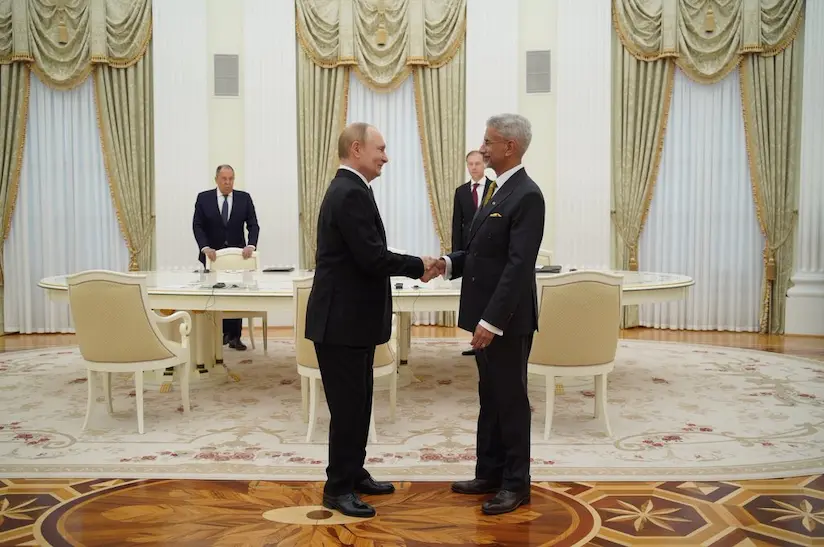
India and Russia target $100B trade by 2030, focusing on energy, pharma, and transport. (Photo-X)
India And Russia Aim Big – India and Russia are strengthening their friendship with a bold new goal: reaching $100 billion in trade by 2030. This announcement came during high-level talks in Moscow on August 21, 2025, where India’s External Affairs Minister Subrahmanyam Jaishankar met Russian Foreign Minister Sergey Lavrov.
The meeting focused on fixing trade imbalances, expanding exports, and building long-term cooperation, especially in energy and transport. At the same time, India is facing pressure from the United States, which recently imposed tariffs on Indian goods linked to energy imports from Russia. But India is standing firm, saying its partnership with Russia is about global stability and mutual growth.
Trade Gap: India Wants to Export More
Right now, trade between India and Russia is uneven. In the financial year 2024–25:
- India imported goods worth $63.8 billion from Russia
- But India’s exports to Russia were only $4.8 billion
This gap is a concern for India. During the talks, Jaishankar pushed for more Indian products to enter the Russian market, especially in:
- Pharmaceuticals: India is known for affordable, high-quality medicines
- Agriculture: Indian spices, grains, and processed foods have strong demand
- Textiles: From cotton to ready-made garments, India wants to boost its fashion footprint in Russia
Both countries agreed to work on removing trade barriers, simplifying customs, and encouraging businesses to explore new opportunities.
Energy & Transport: Building Stronger Connections
Energy is a key part of the India-Russia relationship. India imports a large amount of oil and gas from Russia, which helps meet its growing energy needs. The two countries discussed:
- Long-term energy deals to ensure stable prices
- Joint investments in oil refineries and pipelines
- Technology sharing for clean and efficient energy
Another major topic was the International North-South Transport Corridor (INSTC). This is a big project that connects India to Russia and Europe through Iran and Central Asia. It will:
- Reduce shipping time by up to 40%
- Lower transport costs
- Boost trade across multiple regions
India and Russia agreed to speed up work on this corridor, making it easier for goods to move quickly and safely.
U.S. Tariffs: India Pushes Back
While India and Russia were planning their future, the United States raised concerns. The U.S. recently imposed tariffs on Indian goods, saying India’s energy imports from Russia go against global efforts to isolate Moscow.
Jaishankar responded strongly. He said:
“India’s energy choices are based on national interest and global stability. We will not be pressured into changing our partnerships.”
India believes that buying energy from Russia helps keep prices stable and supports its development goals. The government also pointed out that many other countries continue to trade with Russia, and India should not be singled out.
This firm stance shows that India is ready to defend its decisions and prioritize its own needs, even when global politics get complicated.
India And Russia Aim Big – What This Means for the Future
The $100 billion trade goal is more than just a number—it’s a sign of deepening ties between India and Russia. If successful, it could:
- Create new jobs in both countries
- Open new markets for Indian businesses
- Strengthen energy security
- Improve connectivity across Asia and Europe
It also shows that India is becoming more confident on the world stage. By balancing relationships with Russia, the U.S., and other global powers, India is shaping its own path in international trade and diplomacy. As the world watches, India and Russia are proving that strategic partnerships can thrive, even in challenging times.
Also read – Crude Diplomacy: India Defies U.S. Pressure as Russia Offers Oil Discount Amid Tariff Tensions
Stay updated with latest updated news blogs on Rapido Updates.